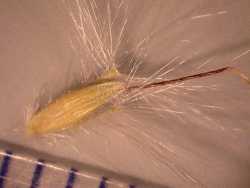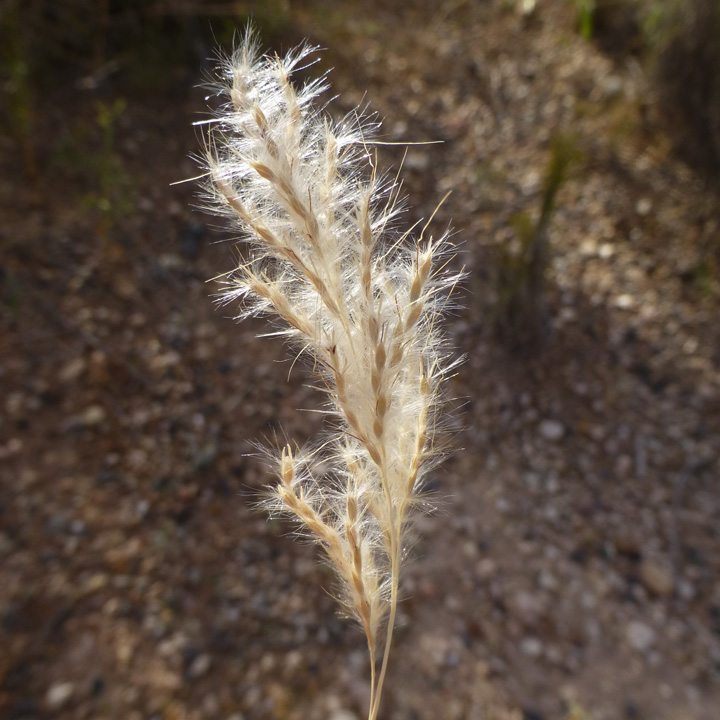|
|
 Spikelet Liz Makings @http://swbiodiversity.org, Usage Rights Creative Commons Attribution-ShareAlike (CC BY-SA) |  Seedheads Max Licher @http://swbiodiversity.org, Usage Rights: Creative Commons Attribution-ShareAlike (CC BY-SA) | | | | |
|
| | |
Origin: Native Season: Warm
Habitat Description: Open dry sandy soils of grasslands, prairies, river bottoms and woodlands. Also found on rocky limestone slopes and in disturbed areas.
Plant Communities:Desert Scrub, Interior Chaparral, Semidesert Grasslands, Pinyon Juniper Woodland, Disturbed Areas
Elevation: 3000 - 6000 feet
Similar Species: Bothriochloa barbinodis
Desc:
Clumping grass with silky flower puffs on vertical stems. Foliage of this plant is 12 to 18 inches high and the erect flower spike grows 2 to 3 feet above the foliage. As fall progresses, the leaves change in color to red, purple or burnt orange.
Identification Notes: Seedheads are up to 5 inches long; spikelets are rounded and awned, stemmed or sessile, sessile ones are subtended by silvery-white or light tan hairs that obscure the spikelets; leaves are often clustered at the base of the plant.
Grass Type: Perennial bunchgrass Rhizomes: N Stolons: N
Large Dense Clump (> 2 feet): N Bushy (highly branched): N
Height with Seedheads: Greater than 36 inches
Seedhead Structure: Branched - contracted Seedhead Droops: N
Flowering Period: Jun - Oct
Number of Flowers per Spikelet: Multi-flowered Spikelets One-sided: N
Awns: 1/4 inch to 1 inch Three Awns: N Awns Bent: Y
Flower and Seedhead Notes: Seedheads are borne on ascending, usually straight branches and have a silvery white coloration. Spikelets have 2 florets; only one is bisexual and fertile. Awns are spirally twisted and bent near the base.
Blade Hairy:
N
Blade with White Margins:
N
Blade Cross section:
Flat or folded
Blade Notes:
Leaf blades flat or sometimes folded, the midvein thickened, and smooth or sparsely hairy at the base. Leaf sheath is smooth, mostly open and loose. Leaf blades are covered with a waxy bluish-green or gray coating and sometimes also have white glands.
Sheath Hairy:
N
Tuft of Hairs at top of Sheath or Collar:
N
Ligules:
Membranous
Auricles (Ear-like lobes at collar area:
N
Forage Value:
Fair forage value for livestock and wildlife. It is usually only grazed in its early growth stage.
|
|